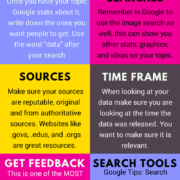Smart content marketers know that constantly producing content can feel like trying to feed a beast with a nearly insatiable appetite. If long-form content like ebooks and whitepapers is a meal, then short-form content is like a snack, providing bite-sized information that’s easily digestible.
 Both long- and short-form content should be part of your marketing menu, but the beauty of short-form content is that it lends itself to a variety of formats and can be repurposed into longer pieces. On top of that, short-form content can often be produced and distributed more quickly than longer pieces that require extensive planning and research.
Both long- and short-form content should be part of your marketing menu, but the beauty of short-form content is that it lends itself to a variety of formats and can be repurposed into longer pieces. On top of that, short-form content can often be produced and distributed more quickly than longer pieces that require extensive planning and research.
Here are some examples of short-form content and tips on how to use them:
- Blog posts and articles: Blog posts and articles can take a variety of forms including round-ups, reviews, or Q & As. For instance, Eloqua posted a round-up post of marketing tips from the Content2Conversion Conference in New York City earlier this year. Publish content on your own blog or provide it as a guest post with a link back to your blog or website. When posting on your own blog, make sure there’s an easy way for readers to subscribe via RSS or email so they’ll stay engaged with your content. Blog posts and articles published on your own site or elsewhere can be easily shared on Twitter, Facebook, LinkedIn, Google+, and email newsletters.
- Curated content: Finding and sharing outside content that’s relevant for your readers helps position your brand as an industry thought leader. You could share links on social media or link to other sources on your blog with added commentary explaining why the topic is relevant to your readers. Companies in virtually every industry find curation useful. The Oregon Wine Board curates news on the state’s wine industry, including tasting events, legislation that’s applicable to growers, and more. And in its news section, Lawyers.com shares infographics, quirky news items, and other links of interest to the legal profession. Our Content Curation Look Book contains several other real world examples of companies large and small that use content curation effectively.
- Podcasts: Not everyone wants to consume content through reading, so offering content in an audio format like a downloadable podcast lets them listen in as they’re driving, cleaning, working out, or otherwise going about their daily lives. Marketing expert Heidi Cohen lists the benefits of podcasting for content marketers, among them extending your content’s reach beyond your blog. One format that works well for podcasts is having a conversation or question and answer session with an expert guest. With the right host, a solo podcast works as well. Podcasts can be posted on your blog and made available as a free subscription through iTunes such as theContent Marketing Podcast by Rachel Parker.
- Videos: A growing number of internet users now watch videos on their smartphones or tablets, making this a great format for relaying information to users on the go. Post videos on YouTube or Vimeo and include relevant tags and keywords so users can easily find them. Videos can also be embedded on your blog, pinned to Pinterest, posted on Facebook, and shared in a variety of other ways. KnowledgeVision posted a video of a skype interview and also weaved highlights of the video into a blog post.
- Webinars: Webinars are a great way to drive email signups and demonstrate your value to current and prospective customers. Content for a webinar can be repurposed from other formats such as a blog post or ebook and polls or surveys completed during the webinar can provide fodder for new content pieces. Create a hashtag for your webinar and encourage attendees to tweet tidbits from the webinar to help build buzz. We hosted a content marketing webinar with Eloqua last year and wrote a blog post as a follow up to the webinar.
- Infographics: Thanks to popularity of big data and visual platforms like Pinterest and Visual.ly, infographics are all the rage. You could create an infographic based on data your company has collected or synthesize data and other information from a variety of sources to tell a compelling story. Include your company’s logo in the infographic so that the original source is clear when it gets shared. Post your completed infographics on Pinterest and Facebook and encourage other bloggers in your niche to share the graphic with their readers.
Tell us! How have you used short-form content to build brand awareness and engage readers? Any other formats you’d add to the list above?



